From China to the world: Labubu and Ne Zha 2 set to drive Pop Mart’s global expansion in 2025
SINGAPORE: It once aspired to be China’s answer to Disney but after a year of explosive growth across Asia, Pop Mart - the company behind the Labubu craze and sell-out Ne Zha 2 movie toy line - now aims to establish itself as a global powerhouse, with overseas business projected to surpass 50 per cent of total revenue in 2025.
Speaking to CNA in an exclusive interview, company executives unboxed their growth strategies.
Southeast Asia has emerged as Pop Mart’s largest overseas market, generating over 560 million yuan (US$77.2 million) in revenue for the first half of 2024, a nearly 480 per cent year-on-year surge.
This year will be “another exciting one”, said Jeremy Lee, the group’s Business Director and Head of Partnership for Southeast Asia.
“We’ve (only) seen the tip of the iceberg in terms of what products are coming out … our team is working very hard, so stay tuned.”
This year, fans can expect new product lines including more Labubu toys and limited edition figurines, pop up stores selling apparel and lifestyle products, as well as “exciting” collaborations with various brands and artists.
“That's the story of Pop Mart - you walk into a store week after week, month after month and are not going to find the same products. It's always going to be something new,” Lee said.
“We definitely hope to capture the success of 2024 and further grow Pop Mart into a global brand,” said Head of Partnership Kevin Zhang, adding that upcoming “cross-branded collaborations” would help “boost brand and IP (intellectual property) awareness”.
NE ZHA SUCCESS
The company has been at the forefront of “China chic” and is drawing on classic Chinese culture to promote its toys.
“Over the next three years, Pop Mart will continue to release collaborative products related to traditional culture and intangible cultural heritage,” said its Vice President Chen Xiaoyun in comments carried by Chinese state media outlets in January.
“By integrating and innovating between traditional and trendy cultures, we can better tell the Chinese story to global fans,” Chen said.
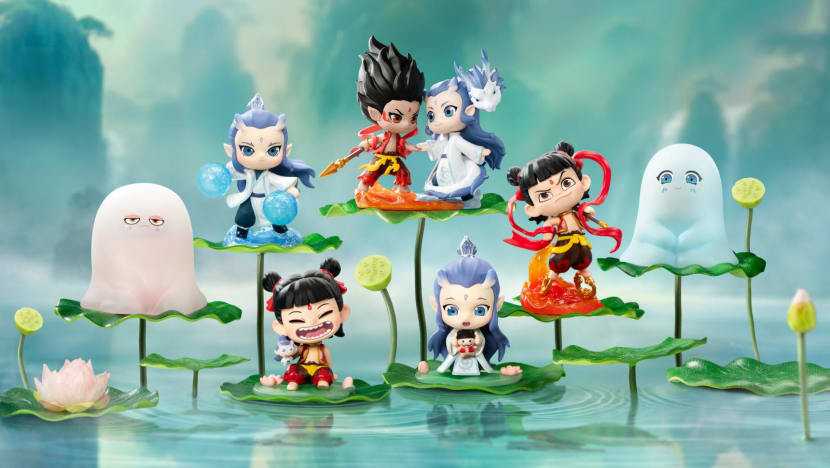
And with Chinese mythology coming under the recent global spotlight, there is no better time.
Classic heroes like Monkey God Sun Wukong are being reimagined and retold in best-selling video games and movies.
The explosive success of Chinese animation Ne Zha 2, telling the story of the mischievous child deity, drove Pop Mart's selling power to new heights.
Its new Ne Zha 2 Born Bonds blind box series sold out in stores across the country - merely days after its Jan 30 release.
Since then, Pop Mart shares on the Hong Kong Stock Exchange have risen by around 20 per cent, hitting record highs on Feb 18.
In a report released in January by US investment bank Morgan Stanley, the Chinese toymaker was named a top pick and is expected to become "a go-to partner for global major IP owners seeking to monetise and extend IP popularity through IP toys".
"Ne Zha 2 became such a box office hit (so) we collaborated with the movie’s IP rights holder and it became another hot product for us," Zhang said.
“It’s really about innovation and technology - managing our IPs and also having a very sensitive hunch about how we work with external IPs as well.”
The film will begin showing in Singapore and Malaysia in March.
As for when its Ne Zha 2 toys would be released internationally, Pop Mart said "timing is crucial" and they would work towards launching it after the movie's overseas release.
In China, it has successfully tapped into the appeal of Chinese folklore and mythology, beloved for generations, experts told CNA.
“They add new stories, innovations and forms,” said Zou Sheng, an interdisciplinary media scholar at Hong Kong Baptist University.
“In Black Myth: Wukong, Sun Wukong is reinvented in innovative ways that integrate new presentations into the narrative rather than just relying on inherent charm.”
“Ne Zha’s new design borrows basic elements from traditional legends yet incorporates fresh interpretations,” he added.
“They are mainly about storytelling, conveying elements of Chinese culture and a deep-rooted spirit,” said Dr Huang Gejun, an assistant professor at Xi'an Jiaotong-Liverpool University in Suzhou.
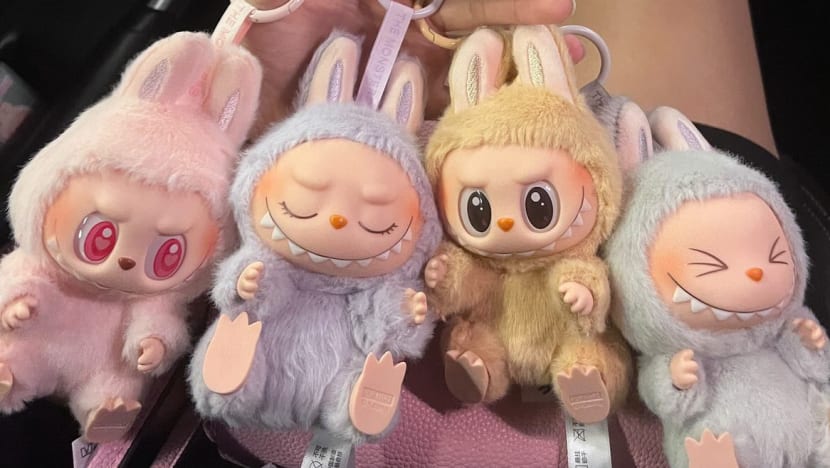
SPENDING POWER OF “EMOTIONAL CONSUMPTION”
China’s toy industry continues to see rapid growth, according to statistics released in late December by Guosen Securities, a state-owned financial services company headquartered in Shenzhen.
Its domestic market size grew from 6.8 billion yuan in 2015 to 60 billion yuan last year, with Pop Mart alone holding a sizable market share of around 8.5 per cent.
Fan fervour, driven by the rise of “emotional spending” among Gen Z and millennial consumers, has translated into lucrative profits for the company, industry observers say.
Nostalgia and selling “emotional value” are important and powerful marketing tools, Lee told CNA, especially in catering to its largely-female target audience of “kidult” spenders, aged 19 to late-30s.
“(The toys) connect people to the place they're living in,” Lee said. “That's why emotional value is so important.”

Zhang noted that the end of the pandemic was especially good timing for the company as it signalled a return to spending for Gen Z and millennials as a way of coping and “healing their inner child”.
“It's been a year since the world has been free of COVID-19 and people are returning to pre-pandemic mindsets,” Zhang said.
“With economic (and daily) pressures, everyone is under a lot of pressure and feels stressed so we are fortunate to provide (some) emotional value, a quiet 15 seconds of joy.”
“(Our products) are something fun, something exciting and something cute - which can connect with you whether you’re happy or you’re sad,” he added.
“All our characters, created by individual artists, live in their own universes and express certain emotions or connect the artists to the world.”
“So it's really the emotional value we try to bring to the world.”

Pop Mart fanatic Ariel Faye, a 30-year-old digital e-commerce executive in Singapore, has spent thousands on her vast collection.
“Emotional value” is what drives her passion for buying and displaying Pop Mart toys, she told CNA.
“The designs are cute and bring a sense of comfort and joy,” Faye said, listing characters like Labubu, Molly and Dimoo as being among her favourites.
In just four months, she and her husband have set up three display cabinets in their new home to showcase the more than 160 pieces in their extensive collection.
“Chasing our favourite IPs gives me a sense of achievement and displaying them after a long day brings comfort,” she said.
BEYOND LABUBU: WHAT’S NEXT?
Beyond blind box toys and collectibles, Pop Mart also plans to expand and improve its existing Pop Land theme parks in China, including adding rides to its park in Beijing.
Pop ups were rolled out across the country last year to bring the Pop Land experience to fans outside Beijing.
“That could be a direction we hope to work on, to bring a taste of Pop Land to consumers outside Beijing,” Zhang said.
Teams have been working to “perfect their formula” before considering further expansion, Lee told CNA.
When asked about the possibility of launching its first overseas park outside of mainland China, he said: "I think in the long term, possibly."
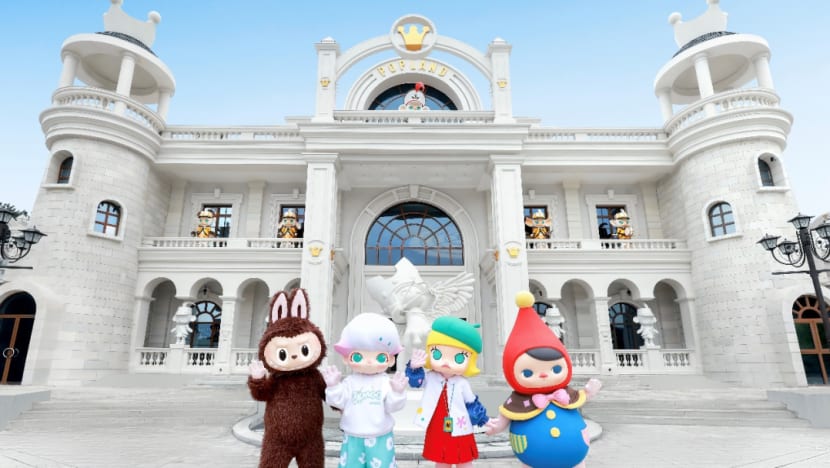
2025 marks Pop Mart’s 15th anniversary since its beginnings in 2010 as an unknown niche toy company.
Its success, while slow, has been “organic”, the company says.
Spontaneous celebrity endorsements and fan engagement sealed its status as a trendsetter in Asia, Zhang says, and have led to lucrative collaborations with global names like Taiwanese bubble tea brand Gong Cha, L’Oréal, Uniqlo and also Samsung Electronics in Thailand.
While China remains its biggest market, this is set to change as the company expands globally to compete with more established competitors like Disney and Sanrio.
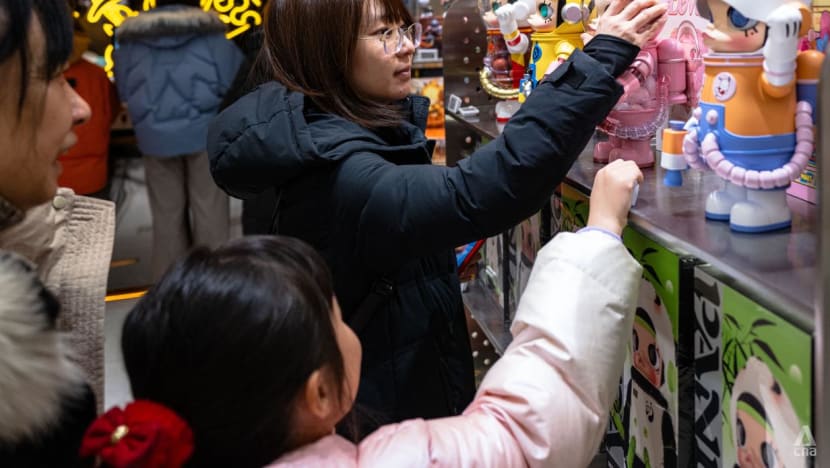
Overseas revenue in 2025 is projected to exceed 50 per cent of total revenue, surpassing domestic earnings.
“We are not only focusing on shouting out our Chinese identity,” said Zhang. “We're still growing and expanding so we do need support from brand partners and the fan community.”

Whether it’s mischievous furry elves or colourful astronaut-themed baby dolls, the demand for Pop Mart toys and collectibles is still going strong across Southeast Asia.
Throughout 2024, Labubu fans in Singapore queued for hours at Pop Mart stores to snap up new releases.
Chaos erupted at a toy convention held at Marina Bay Sands in August as fans clamoured for newly-released Labubu toys and accessories which included a limited-edition Labubu Merlion plush pendant.
The craze even led to strong warnings against theft and gambling, with three teenage boys caught by CCTV camera stealing five Labubus from a claw machine in Yishun.
Labubu as well as other Pop Mart characters like Dimoo figurines and Crybaby dolls, also see huge popularity in Thailand - with the furry monster even being featured in official tourism campaigns.
This huge demand, further driven by endorsements from Thai celebrities like Blackpink’s Lisa and actor Mario Maurer, has led to a booming resale market in the country.
A Labubu plushie, originally priced at around 99 yuan, can be resold at a much higher price, especially if it's a limited edition.
In Vietnam, fanatics flock to a life-size three-storey Pop Mart castle atop the popular Sun World Ba Na Hills tourist attraction, which opened last May.
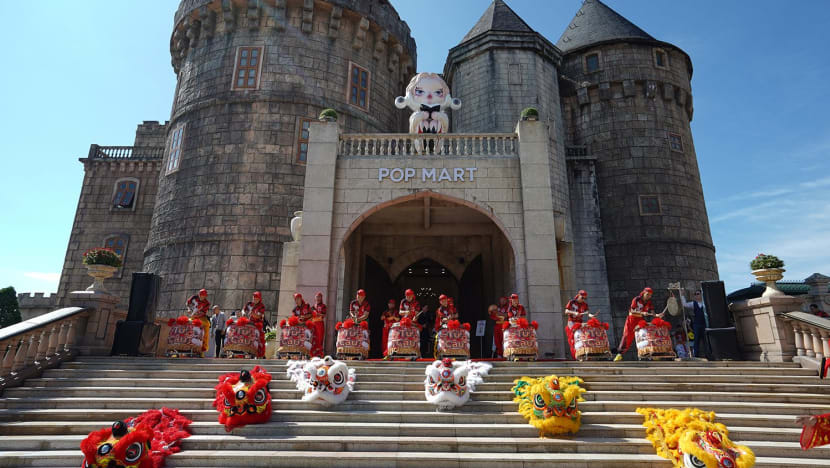
R&D and innovation will be “more crucial than before” in 2025 in keeping up sales momentum, Pop Mart says.
No trend can last forever, Lee said. “The more important (question) is what’s the next trend going to be? What’s going to be popular next? What is going to be exciting?”
“That’s where innovation comes in.”
“If we hadn't done R&D into taking blind box figurines (and transforming) them into half-vinyl pendant plushies, Lisa would never have had the opportunity to pick up a Labubu and put it on her post.”
免責聲明:投資有風險,本文並非投資建議,以上內容不應被視為任何金融產品的購買或出售要約、建議或邀請,作者或其他用戶的任何相關討論、評論或帖子也不應被視為此類內容。本文僅供一般參考,不考慮您的個人投資目標、財務狀況或需求。TTM對信息的準確性和完整性不承擔任何責任或保證,投資者應自行研究並在投資前尋求專業建議。
熱議股票
- 1
- 2
- 3
- 4
- 5
- 6
- 7
- 8
- 9
- 10